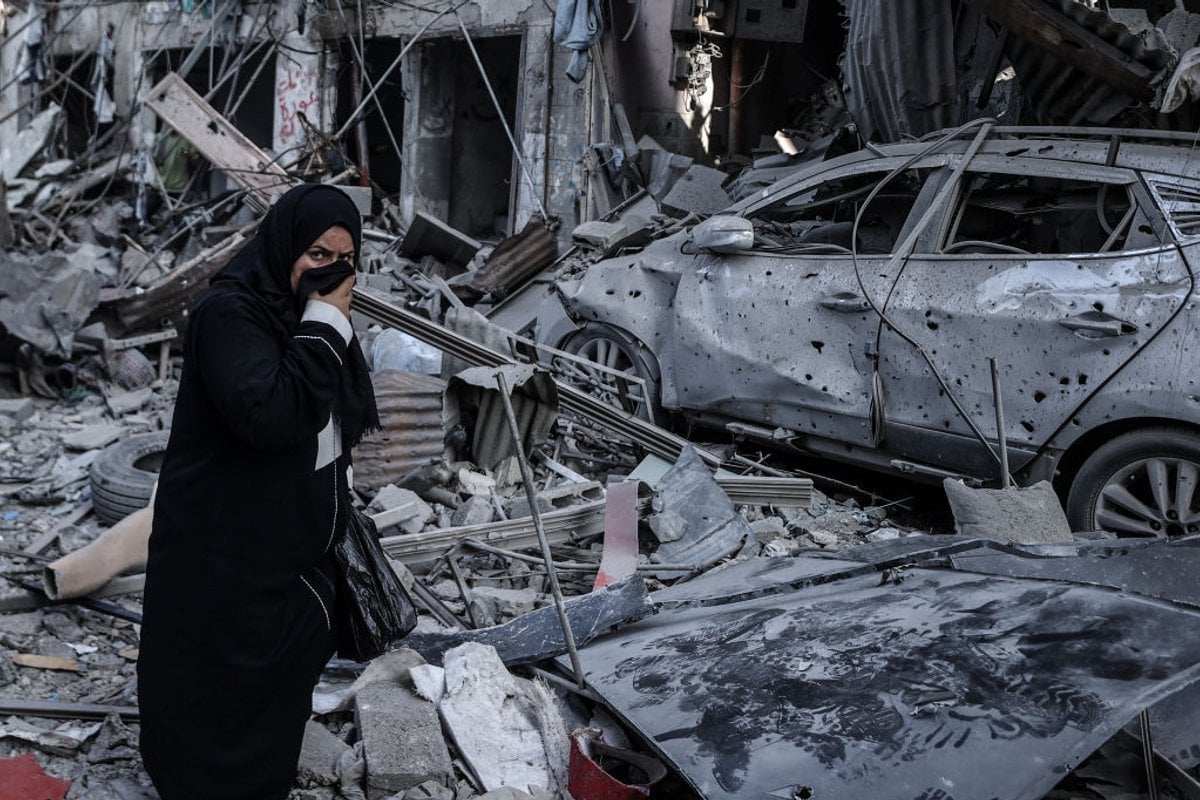
We were never meant to see this.
Wars were once conducted in darkness. Within the claustrophobic confines of media black-outs and passed through the stringent filters of propaganda machines.
Tightly controlled imagery had distance to travel and curation to clear.
An editor rubbing their eyes in their office as the city’s lights flicked on around them, deciding what could be stomached on a newspaper’s front page at breakfast time over coffee and children’s heads.
The images that made it through were either symbolic - a discarded child’s toy lies beside a tank’s crushing wheel - or so rare and memorable they changed everything. The image of nine-year-old Phan Thi Kim Phuc, a screaming, burnt, nine-year-old brutally tagged “Napalm Girl”, immediately animated the civilian toll of the Vietnam War.
Horror had a lead time. Not so, now.
Despite literal black-outs and Internet outages, the word from Israel and Gaza is relentlessly, heroically finding its way to us. In Stories and TikToks and on Telegram and X. On blogs and in group chats and one scroll on from your nan on Facebook. A constant, direct stream from the place where bombs are falling to phones in Drummoyne and Ellen Grove and Digbeth and Mendota.
There is no hiding from its horror.
A terrified family shouting into their screen above the scream of rockets.
A young woman livestreams evacuating her burning house.
A tiny child, pupils wide in indescribable terror, being comforted by a medic while his parents can’t be found.
This is how we see war now. First-person POV shared immediately before a suburban teenager with her latest Shein haul, after an invitation to GRWM: My Therapy Appointment and alongside three chickens dancing.
And, swipe to see bodies.
So many bodies. Coated with dust, almost indistinguishable from the rubble that engulfs them, a tiny glimpse of humanity peeping through the devastation - a T-shirt logo just like your son’s.
A young woman lying discarded on the back of a truck, mostly undressed now from the clothes she carefully chose to dance in on October 6, her limbs twisted in a way that tells you she’s gone.
Bodies in the weeks since, wrapped in bright white shrouds, so many and so light and tiny as they are held up for the sky to witness their loss.
We’re living through history in a blisteringly current way, and the only way we experience anything now: through our phones.
We are seeing what war is. What it does. How it works. What it takes. What it leaves.
So few of us are qualified to parse this horror, or to understand quite what to do with it.
We can aim it at each other, in another war of Who Cares Most.
We can despair, because the scale of loss is so great and the world is feeling less safe, every day.
We can funnel it into righteous energy, to do the little we can to help.
We can choose righteous anger, the kind that starts wars.
And we can use it in the way war correspondence has always been used - to inspire us to urge for peace.
Because what hasn’t changed, from the imagery of “Napalm Girl” to the TikToks from the Gaza strip, is that when you do see war, when you don’t look away, it’s unbearable.
It’s telling that the generations who are most urgently calling for a ceasefire in Israel-Gaza are the ones who are most online. Who are consuming the horror, unfiltered, unspun.
It was easier, once, for those of us lucky enough to be born in peaceful nations to consider war as something that reached us through stirring poems about the brave. Memoirs written by hostages who lived to tell the tale. Letters in our history books from men whose contorted death masks we’ll never see. Grainy black and white photographs. Fictionalised in movies starring Tom Hanks, where the camera pans away, just after impact.
Yet, if we are watching the horror from a distance, via a service provider and a WIFI password, we are currently enjoying the world’s highest privilege.
If our people are safe in their beds and the seats at our table aren’t yawning empty. If we’re not begging for the return of our taken loved ones. If we have a home, a safe harbour. If we can sleep without the fear of never waking as rockets fall. If our religion or heritage is not making us afraid to gather, to travel or speak.
If we’re watching war, in all its unholy horror, and wondering what to do with all this loss, we’re living through a new history from a safe distance.
And our job is only to understand what we are meant to do, now that we have seen this. Now that the horror living in our phones is real.
Our challenge is to stay human. To continue to see the humanity in others. Because when we lose sight of that, people with lives and stories and futures and others who love them become only numbers, and trophies and pawns and shields.
Terror and war always looked this way. But now we see it. It’s in our hands. We were not meant to see it.
And we must never, ever get used to that.
Feature image: Getty.
